Chilling: Arctic Tundra ‘Will Turn to Forest’
Two sets of scientists working independently have come to the conclusion that the Arctic will soon be ice free and forested.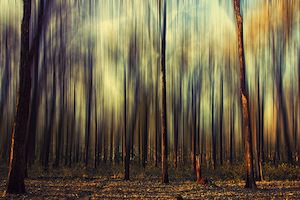
By Paul Brown, Climate News NetworkThis piece first appeared at Climate News Network.
LONDON — An ice-free Arctic, the disappearance of tundra and forests up to the edge of the newly open ocean is how the north will look as the natural world reacts to the new climate caused by carbon dioxide reaching 400 parts per million (ppm) in the atmosphere, according to analysis of new lake sediments.
So far scientists have been guessing what a warmer world will look like, but lake bed cores from Russia provide evidence of the trees and plants that thrived north of the Arctic Circle last time CO2 was at 400 ppm – a barrier broken earlier this month.
There is a time lag of up to 30 years for the temperature to be forced up by the extra CO2 in the atmosphere, so the scientists’ findings give a clue to what to expect by the middle of the century.
Julie Brigham-Grette of the University of Massachusetts Amherst, who led a team of international scientists, says summer temperatures were about 8°C warmer in the Arctic than they are today, and the rainfall three times greater. At the same time the West Antarctic ice sheet did not exist, showing that both landscape and sea level were vastly different.
Underestimating the effects
She said the results showed that scientists might have badly underestimated the effect of existing carbon dioxide levels in altering the climate over time.
Another unconnected team of researchers has been studying how the temperature changes that are already occurring in the northern hemisphere are affecting plants. The two pieces of research appear to point to the same conclusions.
Hans Tømmervik at the Fram-High North Research Centre for Climate and the Environment and 21 scientists from 17 academic institutions have been looking at all the Arctic countries and how they are already reacting to increased temperatures.
He said: “Norwegian climate and vegetation as we know it today might be totally changed within some decades. The same process is happening in Siberia, in Alaska and in the northern parts of Canada. Mountain plateaus become forest land and the winter period is shorter and shorter every year”.
The growing season has increased by up to 40 days in some areas. The temperature difference between summer and winter is getting smaller because the winters are no longer so cold. Spring and autumn seasons are also shorter.
Tømmervik says the start and end period for vegetation growth are very dependent on threshold temperatures. When the trends of these temperatures change and thus change the start of photosynthesis, it will in time change the vegetation.
Pollen in the sediment
The result is that trees and bushes will be able to grow where only lichen and heather were living earlier. Species move slowly towards the north and up into the mountains. The increased vegetation in the north also gives an extra boost to global warming, because it reflects less sunlight back into space than the ice and snow it has replaced, and thus causes even more rapid changes.
The other team were looking at sediment layers and analysed cores collected in the winter of 2009 from under ice-covered Lake El’gygytgyn, the oldest deep lake in the northeast Russian Arctic. “Lake E” was formed 3.6 million years ago when a huge meteorite hit the Earth and blasted out an 11-mile (18 km) wide crater.
It has been collecting sediment layers ever since. Luckily for geoscientists, it lies in one of the few Arctic areas not eroded by continental glaciers, so a thick, continuous sediment record was left remarkably undisturbed. Cores from Lake E reach back in geological time nearly 30 times farther than Greenland ice cores that cover the past 140,000 years.
“One of our major findings is that the Arctic was very warm in the Pliocene [~ 5.3 to 2.6 million years ago] when others have suggested atmospheric CO2 was very much like levels we see today. This could tell us where we are going in the near future.
“In other words, the Earth system response to small changes in carbon dioxide is bigger than suggested by earlier models”, say the co-authors from Russia, Germany and the United States.
Also important to the story are fossil pollens extracted from the lake sediments, which allow scientists to reconstruct life around the lake in the past using modern habitat tolerances to reconstruct past winter and summer temperatures and precipitation.
Another significant finding to emerge from this first continuous, high-resolution record of the Middle Pliocene is the documentation of sustained warmth, with summer temperatures of about 59 to 61° F [15 to 16°C], about 8°C warmer than today, and regional precipitation three times higher than today.
“We show that this warmth well north of the Arctic Circle occurred throughout both warm and cold orbital cycles and coincides, in part, with a long interval of 1.2 million years when the West Antarctic Ice sheet did not exist”, Brigham-Grette notes. Thus both poles share some common history, but the pace of change differed, she said.
Your support matters…Independent journalism is under threat and overshadowed by heavily funded mainstream media.
You can help level the playing field. Become a member.
Your tax-deductible contribution keeps us digging beneath the headlines to give you thought-provoking, investigative reporting and analysis that unearths what's really happening- without compromise.
Give today to support our courageous, independent journalists.

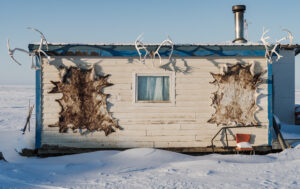
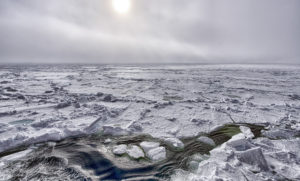
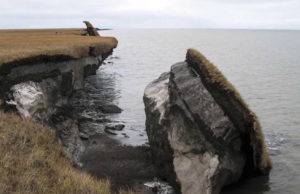
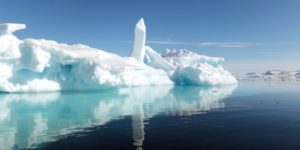
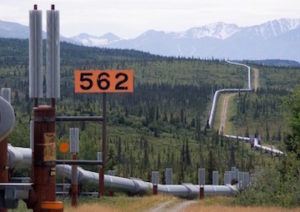



You need to be a supporter to comment.
There are currently no responses to this article.
Be the first to respond.